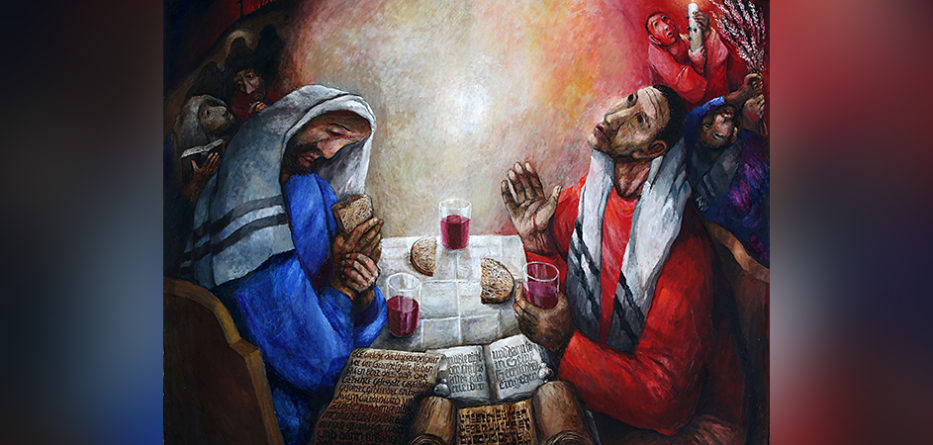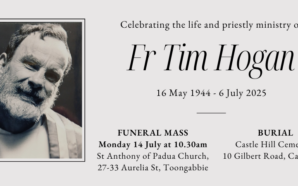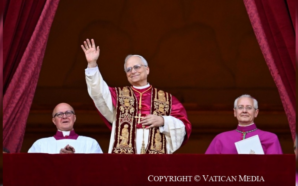Many of us like to travel. But Christians are not just tourists but pilgrims on a faith journey deep into God’s loving presence.
Of course, it’s great that we can literally walk ‘in the footsteps of Jesus’ when we visit the Holy Land. It’s also wonderful for us to encounter the sacred as we pray and meditate at such holy places as Rome, Assisi and Lourdes. Such pilgrimages are often the highlight of many people’s spiritual lives. And certainly, World Youth Day pilgrimages have helped energise many young people’s faith lives in our own recent times.
But Jesus of Nazareth calls us to go far deeper than these external physical pilgrimages.
There is a little verse from the early Irish Church that points this out:
Who to Rome goes,
Much labour, little profit knows.
For God, on earth though long you sought him.
You’ll miss in Rome unless you brought him.
Like the disciples on the road to Emmaus, in reality, our inner journey of faith can actually be quite confusing! We can often experience moments of despair (“we had hoped”) before recognising that the Risen Jesus has been there all along!
Karl Rahner, the great Jesuit theologian, helps us pilgrims navigate that spiritual journey.
Rahner once wisely observed that there are essentially two types of spirituality in the Church today. One is a ‘summertime’ spirituality where people find God easily accessible and understood.
Such people are gifted with a sense of certainty and a conviction that the beauty and truth of God is very nearby. Perhaps this more external style of faith was easier to live in a culture that was thoroughly Catholic like in the medieval period.
The other spirituality however is a ‘wintertime’ style of faith where people, battered and bruised by the chaos and suffering of the world, need to go an inner pilgrimage to address the mystery of pain and chaos all around them.
Rahner argued that this is the more typical journey of contemporary Catholics struggling to believe. It is a difficult pilgrimage that goes on inside our own souls, as we seek to discover the hidden Christ who mysteriously dwells in our very own hearts.
Not surprisingly, that’s a pilgrimage we are all too often very reluctant to undertake. For it can involve loneliness, depression and even tempt some to self-hatred.
It inevitably demands navigating a ‘dark night of the soul’. For at some point in all our lives, like Jesus, we each have our own personal ‘agony in the garden’.
Then the demons of our inner life come to the fore and wreak havoc. Old obsessions and wounds, perhaps even guilt and shame at past failures rush in.
Martin Laird OSA, in his wonderful book Into the Silent Land, describes it poetically as “the liturgy of our wounds”. Unquestionably, it is a long and demanding task for most of us. It certainly is for me.
Laird explains that there is a deeply ingrained tendency to recoil from our own brokenness, to judge it as others have judged it, to loathe it as we have been ‘taught’ over a lifetime to loathe it. In doing this we avoid what God, in Christ, draws close to and embraces.
Like the companions of Jesus on the road to Emmaus, our Resurrection moments can come as quite a shock to us! Like them, as we ponder the Scriptures and break bread with our Risen Lord, we can be often surprised, even shocked, by grace.
For at such moments of epiphany we discover, alongside the depressed and despairing disciples of Emmaus, how God interrupts our lives. For our God meets us at that precise point where we are most in need, in our poverty and brokenness. And paradoxically, this costly acceptance of Christ’s compassionate love, opens our eyes to the reality that ‘all is grace’.
As Gerald Manley Hopkins S.J divined:
I say móre: the just man justices;
Keeps grace: thát keeps all his goings graces;
Acts in God’s eye what in God’s eye he is –
Chríst – for Christ plays in ten thousand places,
Lovely in limbs, and lovely in eyes not his
To the Father through the features of men’s faces.
Thank God we are each given many ‘resurrection’ moments on our Emmaus-like journey of faith. They console us on our pilgrimage home to the Father of all mercies.
For as the early Irish mystics would say:
Let your feet follow your heart until you find your place of resurrection.
Br Mark O’Connor FMS is the Vicar for Communications in the Diocese of Parramatta.
This article was originally published in the 2022 Season of Creation | Spring 2022 edition of the Catholic Outlook Magazine. You can pick up your copy of the magazine in parishes, schools and offices across the Diocese of Parramatta now or you can read the digital version here.








